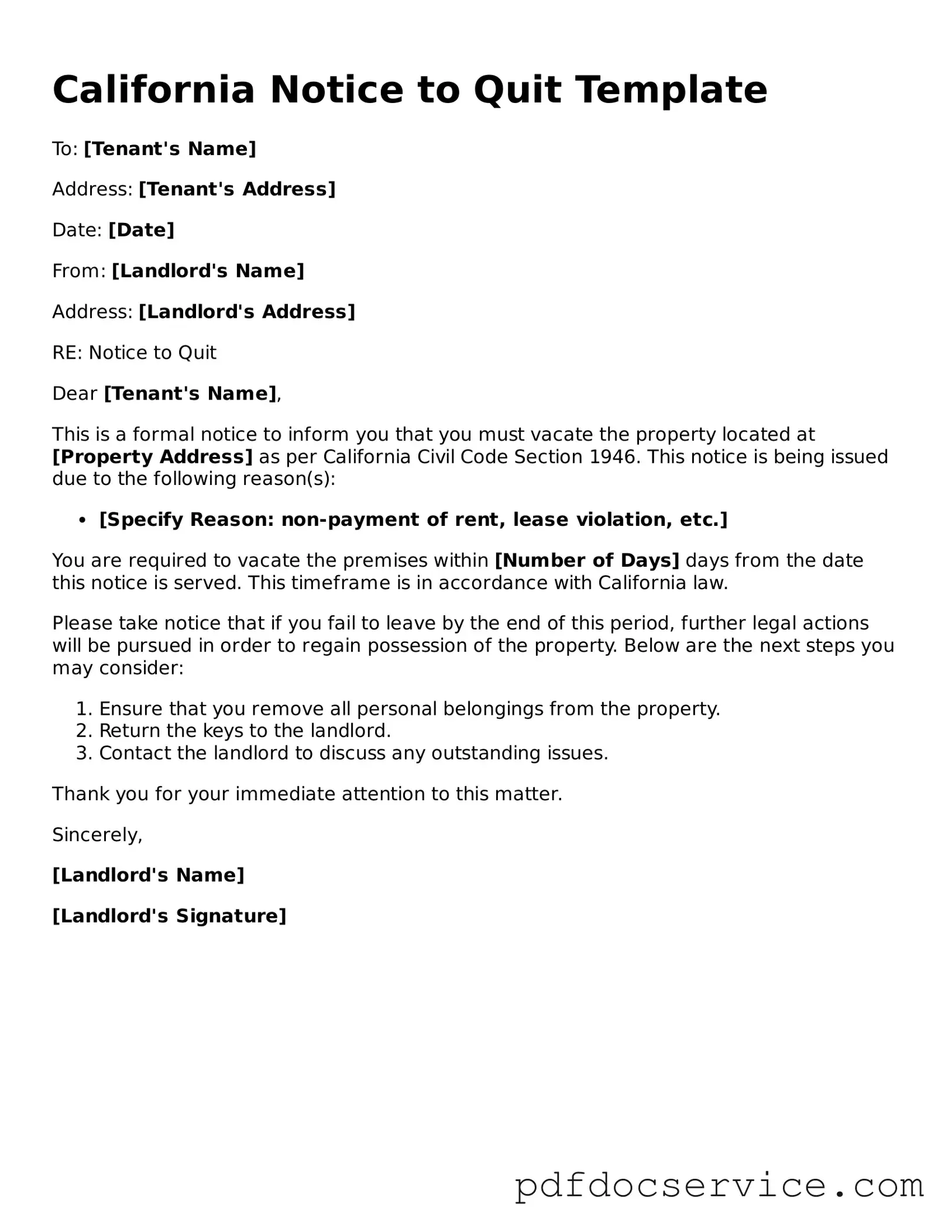The California Notice to Quit form serves as a crucial tool for landlords and property owners seeking to terminate a tenancy. This legal document outlines the specific reasons for eviction, whether due to non-payment of rent, lease violations, or other grounds permitted under California law. Importantly, the form must comply with state regulations, ensuring that tenants are given proper notice and the opportunity to remedy any issues before eviction proceedings can commence. The timeline for notice can vary, typically ranging from three to thirty days, depending on the circumstances surrounding the eviction. Additionally, the Notice to Quit must be delivered in a manner prescribed by law, which may include personal delivery or posting at the property. Understanding the nuances of this form is essential for both landlords and tenants, as it lays the groundwork for the legal process that follows, ensuring that both parties are aware of their rights and obligations. Proper completion and delivery of the Notice to Quit can significantly impact the outcome of any subsequent legal actions, making it a vital step in the eviction process.
